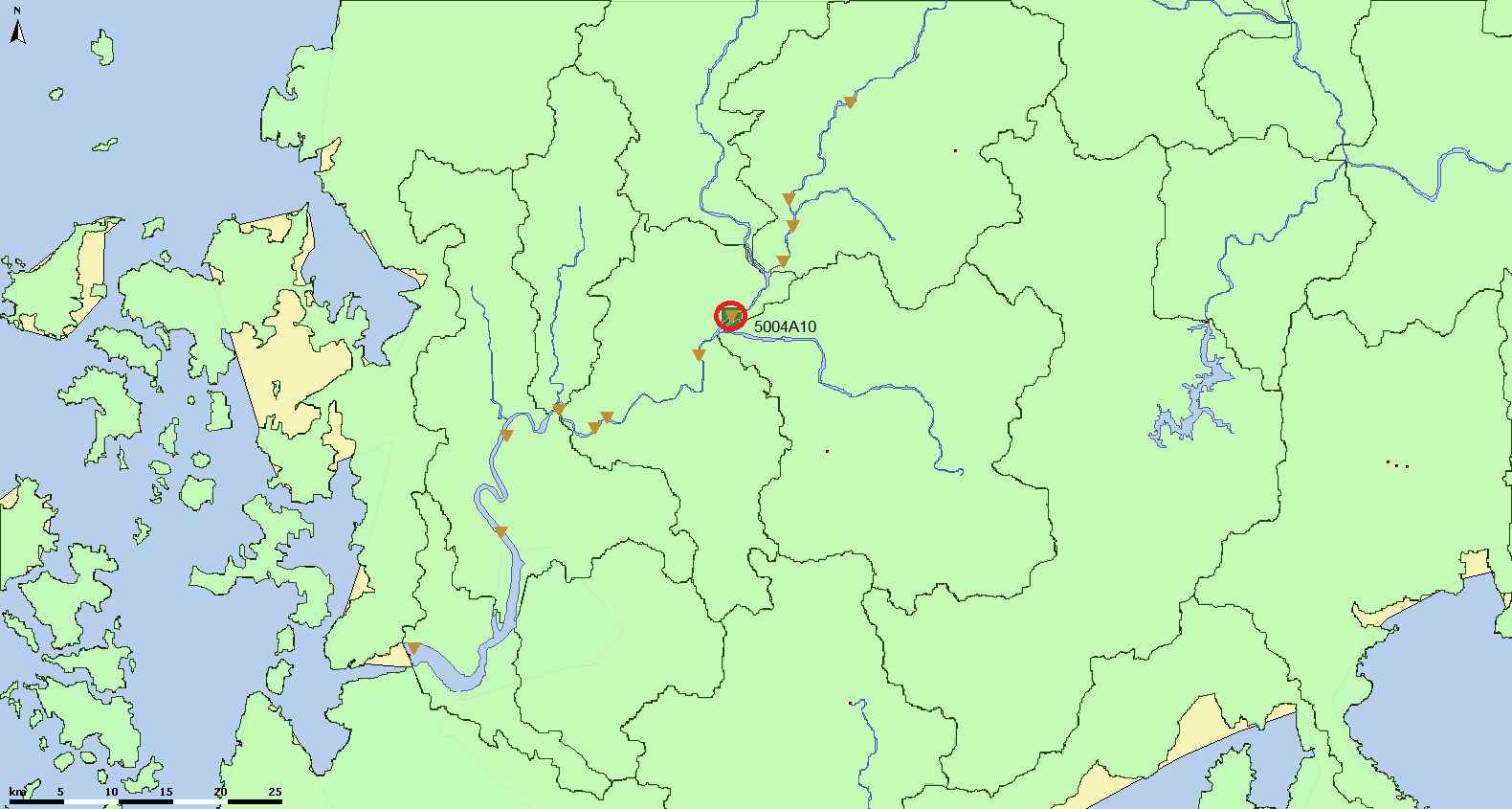...
Synthetic observations are generated by running a stochastic model with the above mentioned noise specifications. One assimilation location is used (circled on the figure below) with four observed parameters: Algal Cyanobacteria, Algal Diatom, Algal Green, and Phosphate. When generating the synthetic observations and in the Kalman filter setting, a standard deviation of 0.1 μg/L is assigned to each of the three observed Algal parameters, for Phosphate a standard deviation of 0.01 μg/L is used. To be close to reality, we sample the synthetic observations with a period of seven days.
Data assimilation system
The experiment is performed using the operational forecasting system FEWS NIER. The systems makes use of OpenDA as its data assimilation suit.
The study period is the whole year 2015. The simulations are splitted into shorter simulations of 3 days; each simulation started from the previous run. The first run with T0=01-01-2015 00:00 (GMT+9) starts from T-10 days (21-12-2014 00:00 GMT+9).
In this experiment, EnKF with 8 ensemble members is used running on a machine with CPU 3.20 GHz and RAM 32 GB. The simulation took about 59 hours to finish (about 0.5 hour per 3 day interval).
Results
At assimilation station
...
